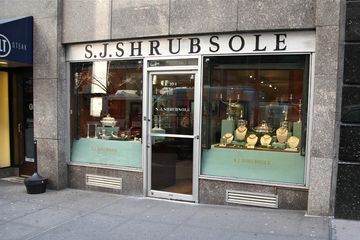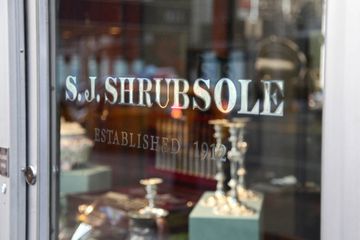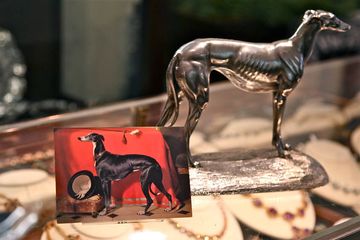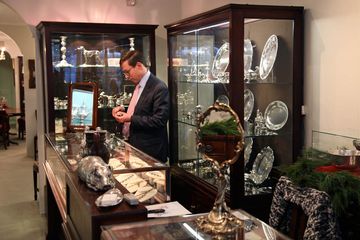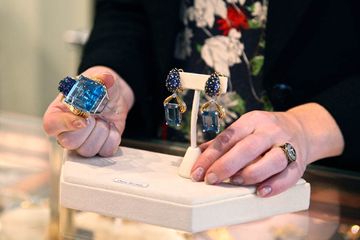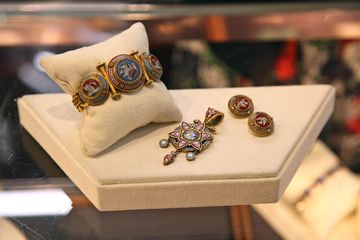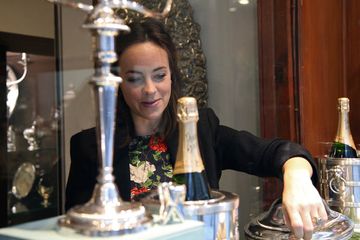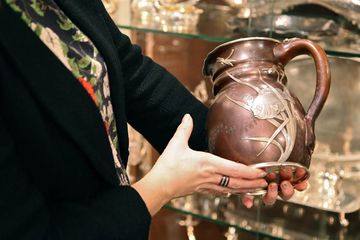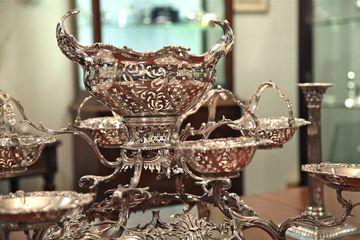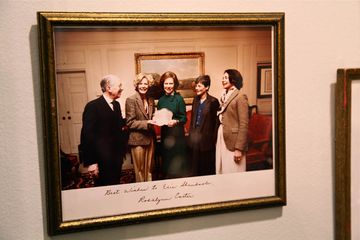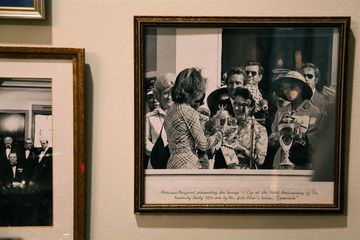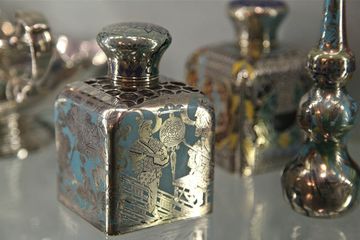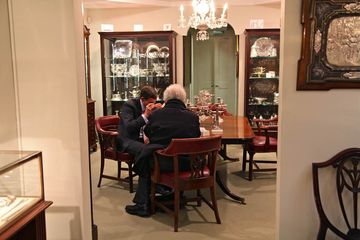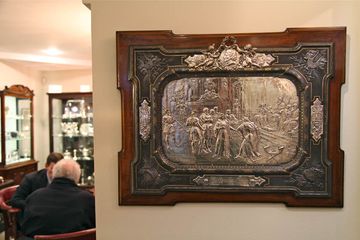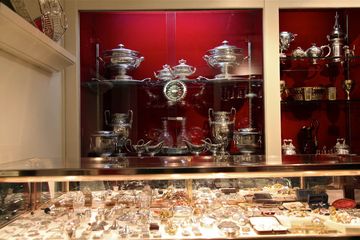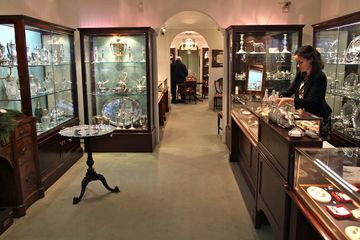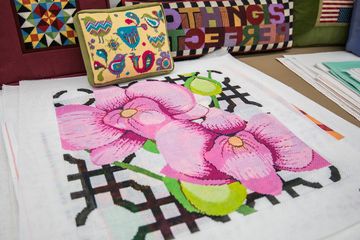
As I told Jim McConnaughy, the vice president of S.J. Shrubsole since 1982, I was, initially, intimidated to enter this world-renowned silver and jewelry shop, but after meeting him, I was able to relax and engage in conversation. There were many remarkable stories that Jim shared with me, but the most incredible was Eric Shrubsole's. His father, S.J., opened a silver shop in London in 1912, where his son learned the trade. When old enough to go it alone, however, Eric made the decision to come to the States. He traveled throughout the country collecting silver pieces, only to land in Manhattan, on 57th Street, where he has remained since 1936. What was astonishing to me was to learn that Mr. Shrubsole, at the end of 2014, is 102 years old and still coming into work.
There was a time when 57th Street was filled with "serious antique shops," Jim explained. Today, Shrubsole is one of the last remaining. Perhaps, Jim reflected, this is because they deal in small objects, and therefore do not require the same amount of space to house their merchandise. Unfortunately, the real estate prices simply forced many to move to different parts of the city.
At this point, Jim mused, "We are known as having the most extensive fine English and American silver collection from the eighteenth century." They have even sold the rare Paul Revere silver pieces. "Yes," Jim laughingly told me, "He didn't just ride around on a horse during the Revolution. He was an excellent silver craftsman."
When I inquired about their clientele, Jim told me that they have two different types of clients - those that want to be surrounded by beautiful objects in their homes and those who are serious collectors, looking for particular pieces of silver that his company is able to locate. In addition, museums buy from them on a regular basis.
As we walked through this regal shop, both Jim and Nadine, the director of jewelry, began opening up the glass doors and showing me some extraordinary items. I was particularly taken by the silver greyhound and the story that dates back to 1840. Apparently, Queen Victoria commissioned this dog as a twenty-first birthday gift for Prince Albert, shortly after they were married. It was modeled after Eos, Albert's favorite dog, and mentioned in Queen Victoria's journal. Jim was proud to tell me that they have all the documents to prove its authenticity, including information on the sculptor who made and signed it.
Dating back to 1762, there was a breathtaking Rococo epergne. Nadine thought that these would have been used to serve fruits and candies, or simply displayed as a fantastic table piece. I also appreciated the intricate detail on a set of perfume bottles from Paris that were crafted in silver over glass, painted with beautiful enamel colors. Although they predominantly showcase English silver, I was struck by a case filled with original Tiffany objects from the 1890s, when Americans were influenced by Japanese prints. The decorations on many of the items were of fish, dragonflies and even turtles - all Asian inspired.
The collection of jewelry was equally fascinating. Shrubsole had antiques dating back to 1680 alongside pendants and earrings from the 1980s. I saw signed jewelry by Van Cleef and Cartier, as well as some "crazy fun" retro suites from the 1940s. I marveled at a 165 carat aqua marine ring, as well as the winged ring and earrings that Salvadore Dali created in 1958.
After my education in silver and antique jewelry, I had to bring our conversation back to Mr. Shrubsole, as I continued to dwell on this amazing gentleman. When I commented, once again, on his age, Jim's response was, "If you do something that you love, it keeps you going." He went on to share a recent story when the staff was at a silver show at the Armory on Park Avenue. People were continuously stopping by to say hello to Mr. Shrubsole, who was seated on a chair, but he eventually became bored and stood up and began wandering around making purchases for his shop. Jim then paused and said to me, "Wouldn't the world be a better place if we could all do what we loved?" Indeed.


